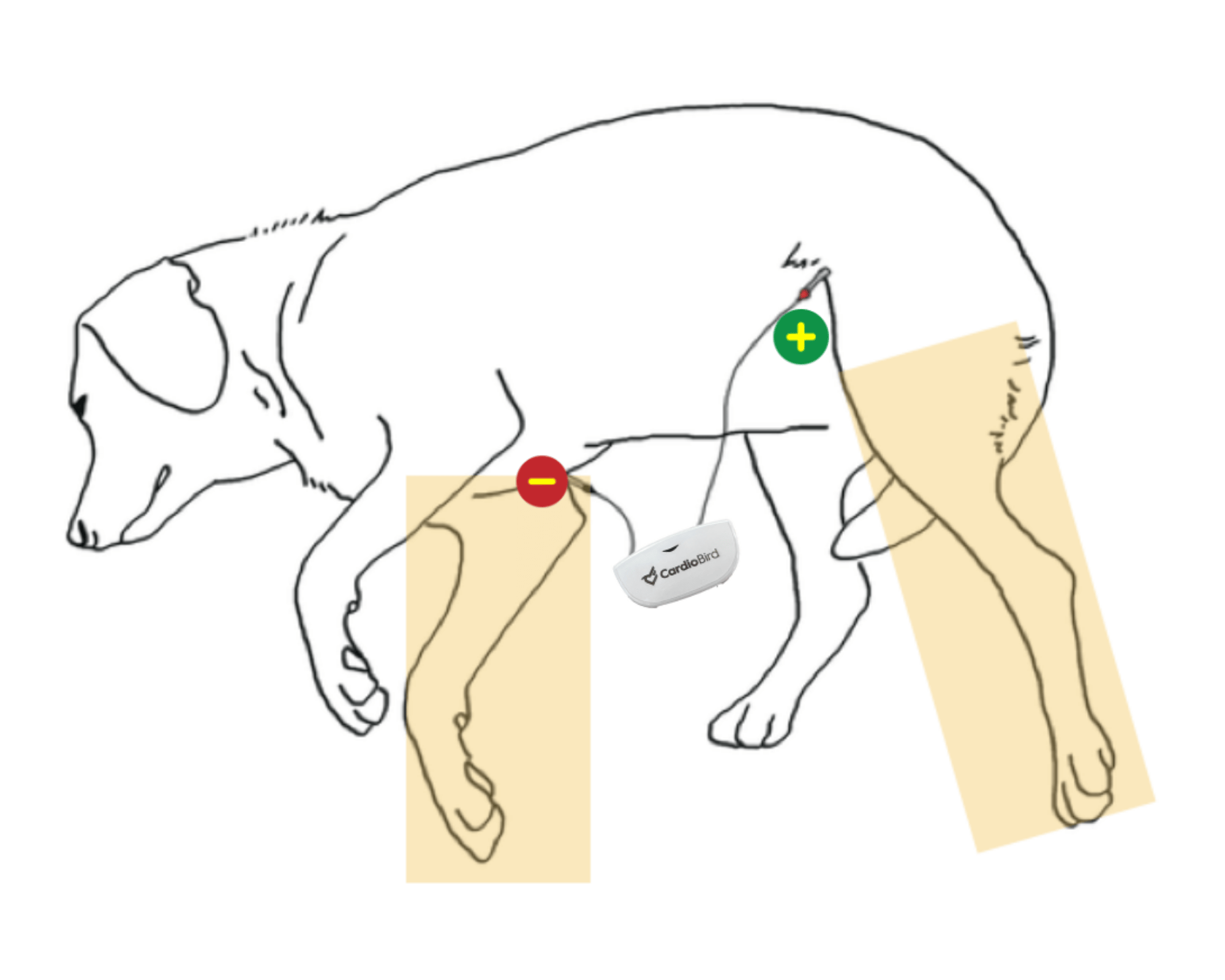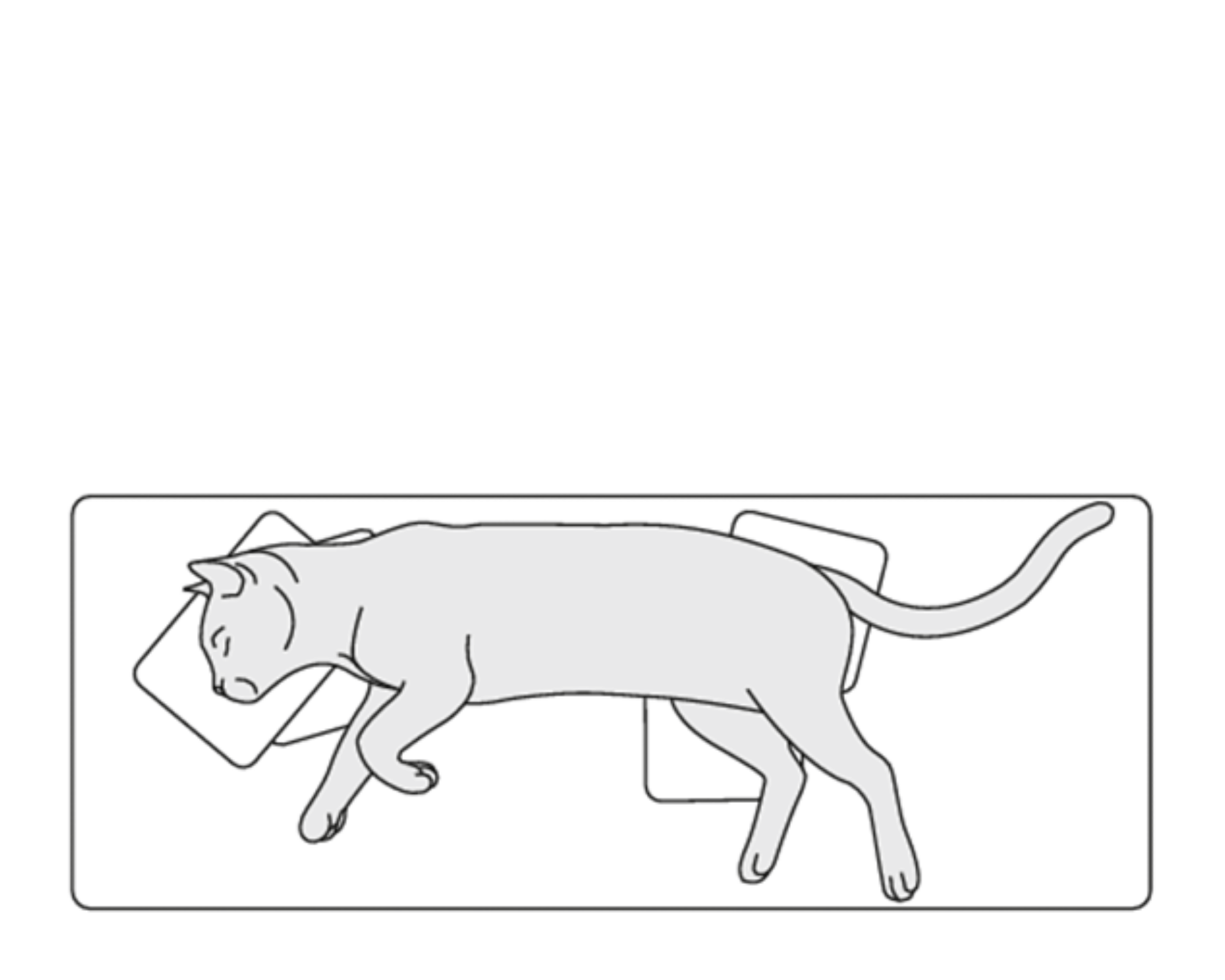Why Right Lateral Recumbency Matters for ECG Tests in Dogs and Cats

Right Lateral Recumbency positon with CardioBird applied.
Why Right Lateral Recumbency?
For dogs and cats, the right lateral recumbency position is the gold standard for diagnostic and screening ECG tests. This position minimizes variability in heart position and thoracic conformation, optimizes electrode placement, and provides the most consistent and reliable waveforms for accurate interpretation. Studies (e.g., Rishniw et al., 2002; Stern et al., 2013) confirm that this position yields the most comprehensive and reproducible measurements for clinical evaluation.
What Happens in Other Positions?
When pets are in standing, sitting, or sternal recumbency positions, ECG waveforms can change significantly. For instance:
- Amplitude of waves (e.g., P, R, and T waves) may vary.
- Axis deviations and subtle arrhythmias can become harder to detect.
- Increased variability makes standardized interpretation more challenging (Coleman & Robson, 2005).

Image courtesy to AO Vet
In short, deviations from right lateral recumbency can reduce diagnostic accuracy.
When to Consider Other Positions?
If a pet cannot tolerate right lateral recumbency due to stress, pain, or medical conditions, alternative positions (e.g., standing or sternal recumbency) are acceptable. However:
- Be aware of potential waveform variability.
- Clearly document the position used, as it affects ECG interpretation.
Key Takeaway
For most diagnostic and screening ECGs, stick with right lateral recumbency to ensure accuracy and consistency. Use alternative positions only when necessary, and interpret results cautiously, accounting for potential variations. By prioritizing positioning, you’ll achieve the best results with CardioBird for your patients.
Stay tuned for our featured full article on this important topic in the upcoming issue !

